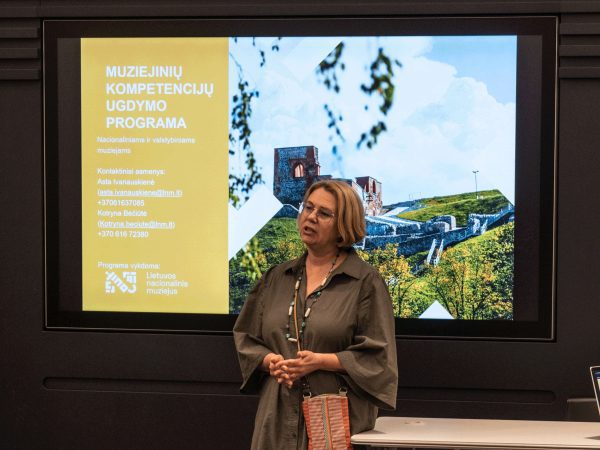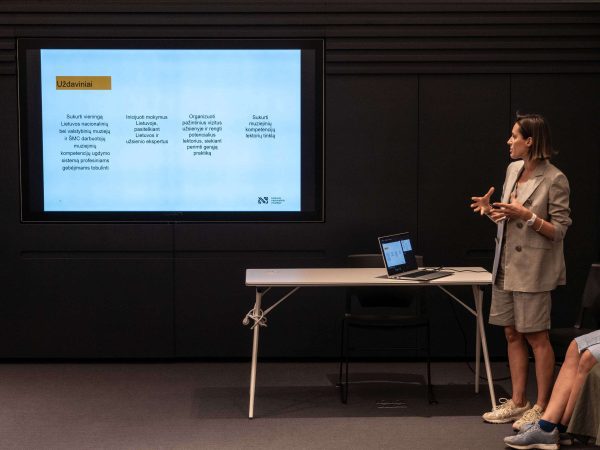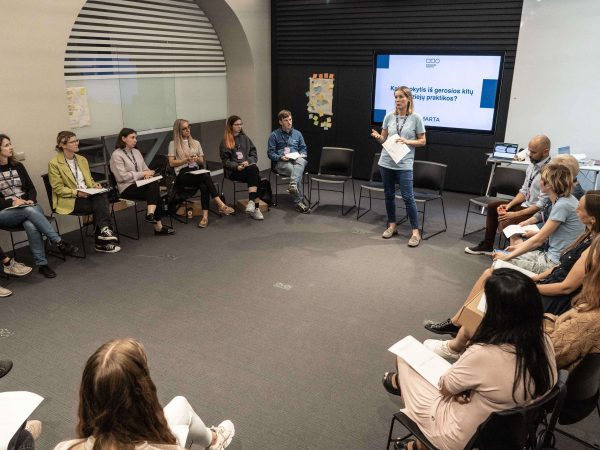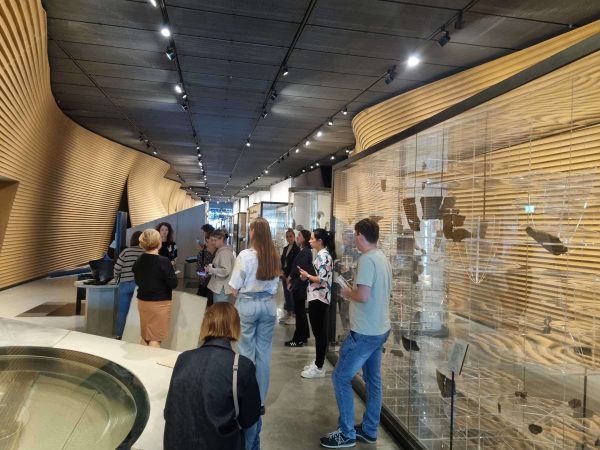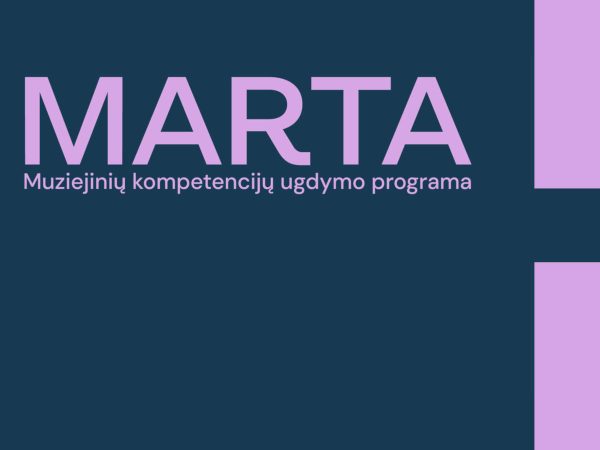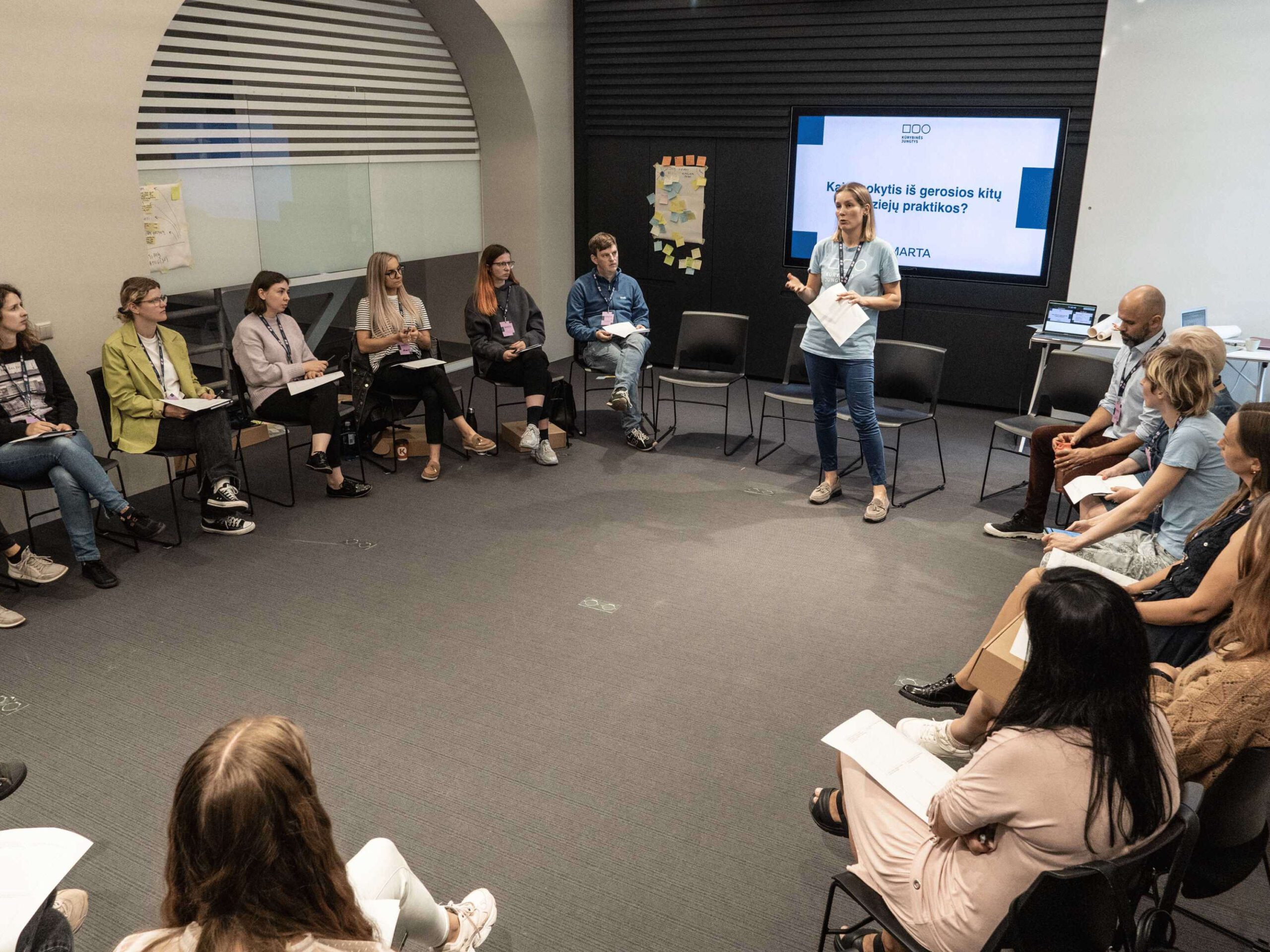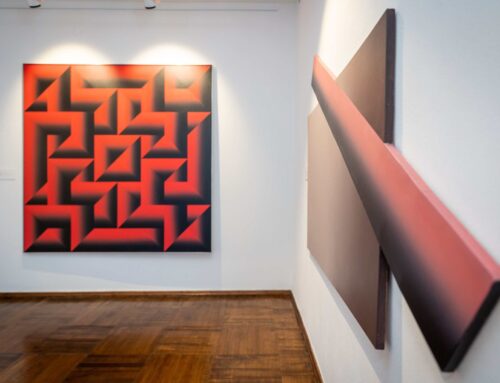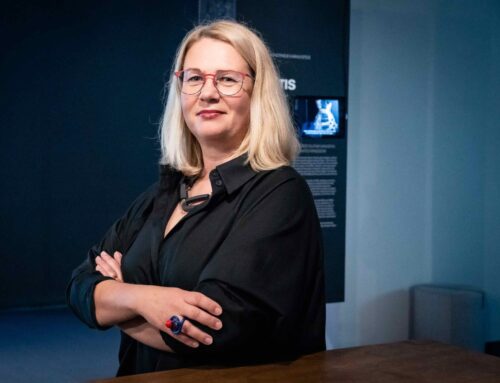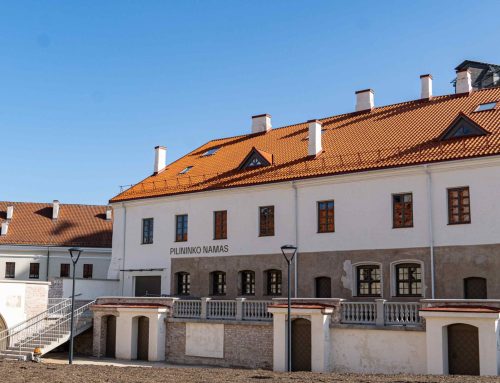A New Museum Skills Development Program Promises Learning from World-Class Museums
2023 09 22
A centralized museum skills development program called “Marta” launched this year in Lithuania. Although the program is aimed at professionals working with national and state museums, its benefits will be felt by a much broader audience: Museum visitors expect increasingly contemporary solutions and this program will provide for training with world-class museums.
The need for a comprehensive museum skills development program became clear as early as 2017, after an analysis of the needs of Lithuanian museum staff regarding their own qualification development. The study showed that only 10 percent of respondents felt they had sufficient knowledge and skills. Last year, the Ministry of Culture decided to organize a museum skills development as an ongoing, centralized program and entrusted this undertaking to the National Museum of Lithuania.
“We wanted to move away from a formal name – which is how this program got the name ‘Marta’, the etymology of which stems from the words ‘leader, mistress’, but if we expand the contact to the museum space, we could say it also refers to a ‘mentor’ or ‘curator’. We hope that every participant will welcome the program as a place for development, growth and, most importantly, for sharing knowledge – since some of us have more of it, others less, but together we can do so much,“ says the program’s director Asta Ivanauskienė, Deputy Director General of the National Museum of Lithuania.
One of the program’s goals is continuous learning and development, adapting to society’s changing needs and expectations.
“Museums have to be flexible, reacting to change in a timely and exceptional way to remain relevant as providers of cultural services. At the same time, it’s important to ensure progress in the museum field. Methods that have been applied for a long time are no longer sufficient to create an appealing experience for contemporary museum visitors. This justifies the need for the program and encourages us to discover and successfully integrate multifaceted measures to respond to the needs of a rapidly evolving and highly dynamic society,” says Dr. Rūta Kačkutė, Director General of the National Museum of Lithuania.
The LNM’s director added that the program will not be limited solely to the development of practically applicable skills, but that an important part of the program will also address questions pertaining to ideas and values: “Within the context of global problems, it’s very important to properly realize and use the opportunity provided by museums to develop society in the fields of environmental protection, equality and tolerance, respect, and social responsibility, but additional knowledge and skills are needed to convey this information properly and effectively.”
The program is expected to run at least three years. Skills development will be organized through ongoing training and seminars on various topics, conducted by lecturers versed in the necessary expertise and experience from Lithuania and abroad, and through internships at foreign museums.
World-Class Best Practices
In the implementation of the program, the National Museum of Lithuania has begun to collaborate with museum leaders from other Baltic, Scandinavian, and European countries, who have agreed to welcome representatives from our country’s museums and introduce them to the principles of their work.
“As we discussed the program’s implementation, it became clear that training abroad is a very important experience. We chose museums that have already introduced or already apply innovative solutions in their work for exhibition development and adaptation, visitor services, and other contemporary approaches,” says Asta Ivanauskienė.
The program will also offer innovations: The “Kūrybinės jungtys” (Creative Connections) community of creators has developed a methodology based on the principle of collegial learning specifically for this program. This will ensure that world-class museum practices reach a larger number of participants than can be sent abroad for internships.
“Learning from the practices of other countries can help us discover the things we don’t yet have, or to address challenges for which we also don’t yet have solutions. But can a few dozen people going abroad really bring fundamental changes to the entire Lithuanian museum field? Once we got involved in the organizing of this program, this dilemma became a challenge for us, too. The goal was to make these visits part of a greater process and change, so that it wouldn’t just be a trip to see how other museums work,” says Milda Laužikaitė, Head of Creative Connections.
The newly created learning and training model will enable the transfer of knowledge to colleagues in Lithuania, since program participants who visit foreign museums will be trained how to share their knowledge with colleagues from other museums, and be inspired to develop their ideas together to create qualitative change at Lithuanian museums. Such a model will promote cooperation and networking between different museums to implement changes and introduce best practices and will also respond to the lack of collegial learning that has been acutely felt for some time.
This year, 45 people will take part in the foreign internship program. The entire process consists of preparatory meetings before leaving for museums abroad, post-visit meetings and, finally, training to share the experience with those who did not take part in the internships.
“Program participants will first learn how to study best practices, to understand how a specific group or organization was able to establish them. Over many years of operation, we’ve already observed that seeing or experiencing something doesn’t necessarily change people’s practices and doesn’t necessarily evolve into innovation or new working methods. That requires deliberate effort, analysis, discipline, and constantly asking oneself: What working methods, principles, and conditions help them to work the way they do, and how can I apply all of that, what can I do with it? Deliberately seeking out, recoding, and subsequently systematizing helps to achieve better results,” says Milda Laužikaitė.
After returning from their internships at foreign museums, program participants will first devote time to make sense of their own training, and then pass on the knowledge they have gained to others through various events.
“Post-internship training sessions will actively share experiences and encourage the development of more modern or new visitor services on that basis. This opens up a wide range of opportunities, as it would be financially difficult to send all museum employees for internships abroad, and many of them would be unable to do so due to language barriers or other reasons,“ says Asta Ivanauskienė.
This year, four visits are planned to Estonia, Sweden, and the United Kingdom. The first already took place in September: Fifteen museum representatives from across Lithuania visited Estonia and learned from the experience of the Estonian National Museum, the Estonian Maritime Museum, KUMU Art Museum, Estonian Museum of Occupations and Freedom, and the Kiek in de Kök Museum. Next year, the program plans to visit museums that attract huge numbers of visitors every year: the Louvre in Paris, the Vasa Museum in Stockholm, and the Victoria and Albert Museum in London.
This program is being implemented by the National Museum of Lithuania. The program will ensure the centralized and continuing development of museum skills. Initially, the skills development program will welcome specialists from Lithuanian national and state museums (17 institutions in total) and the Contemporary Art Centre. It is anticipated that the program will expand to include regional museums in the future.

